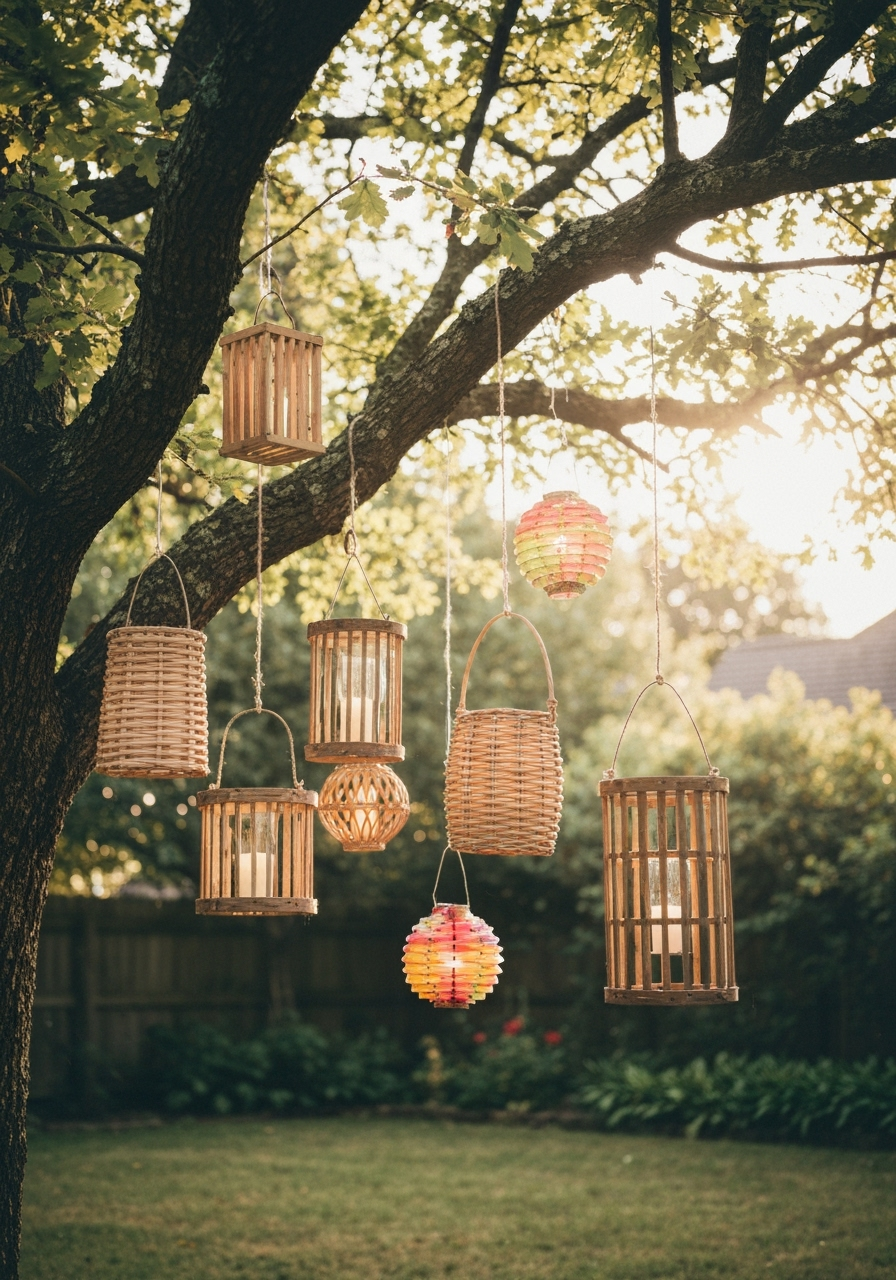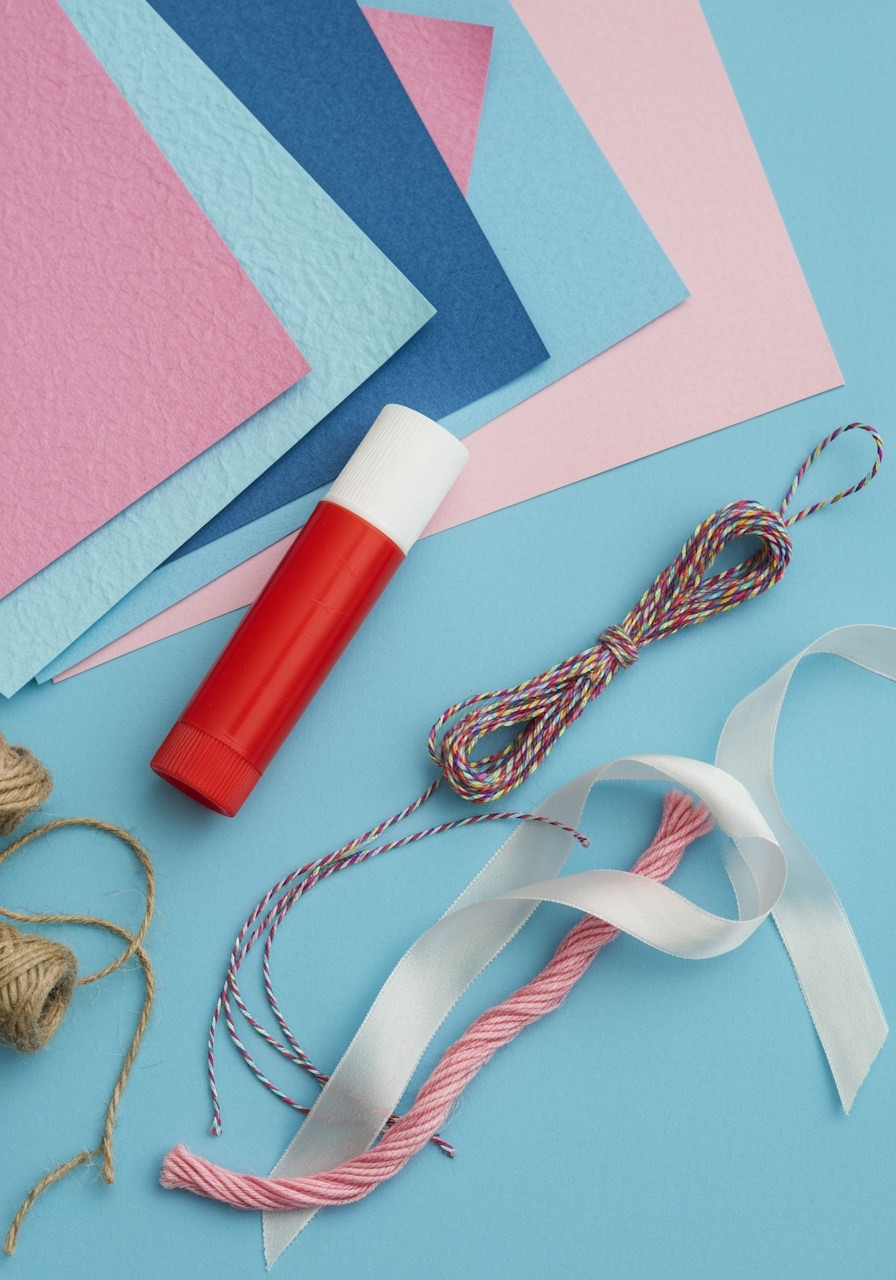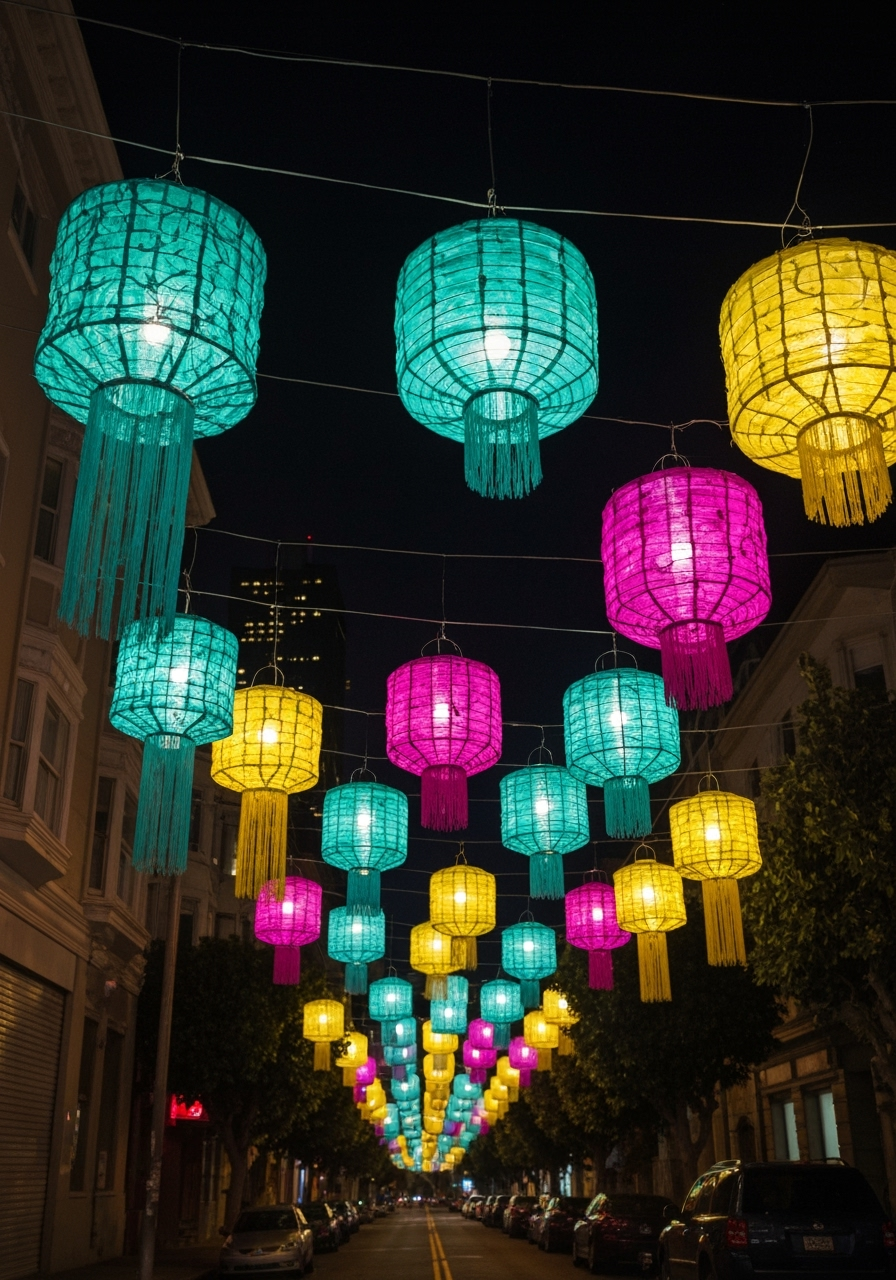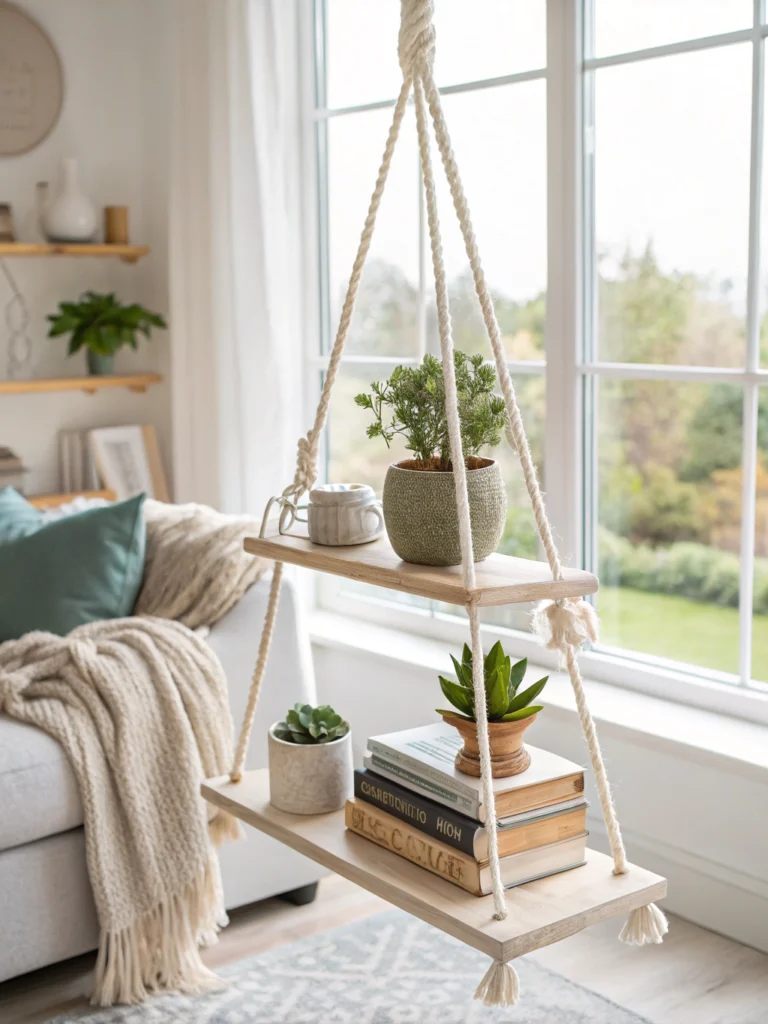Introduction
Tired of that one dark corner in your living room or a patio that feels a little lackluster after sunset? You’re not alone. Creating a warm, inviting atmosphere can feel like an expensive puzzle, but the solution might be simpler (and more fun!) than you think. With a little creativity and a few basic supplies, you can craft your own stunning DIY hanging lanterns to illuminate any space, indoors or out. Forget generic, store-bought lighting. This guide will walk you through five unique and easy projects, transforming your home into a cozy, personalized haven. Whether you’re a seasoned crafter or just starting your DIY journey, get ready to light up your world with decorations that are truly you.

*Caption: Create a magical ambiance in any space with your own handcrafted hanging lanterns.*
Why Bother with DIY? The Magic is in the Making
Before we dive into the fun stuff, let’s talk about why making your own lanterns is such a rewarding experience. First and foremost, it’s about personalization. You get to choose the colors, materials, and style to perfectly match your existing decor. Want a rustic farmhouse vibe? Go for mason jars and twine. Dreaming of a bohemian paradise? Macrame is your new best friend.
Secondly, it’s incredibly cost-effective. High-end decorative lighting can cost a fortune. With DIY, you’re often using recycled items or inexpensive craft supplies to create something that looks a million bucks.
Finally, there’s the sheer satisfaction of it. Pointing to a gorgeous glowing lantern and saying, “I made that,” is a feeling that never gets old. It’s a way to pour your personality directly into your home, making it a true reflection of who you are. These projects aren’t just about creating light; they’re about creating memories and joy.
Table of Contents
Table of Contents
What You’ll Need: Your Lantern-Making Toolkit

While each project has its own specific list of materials, there are some common tools and supplies you’ll likely use across the board. Gathering these essentials beforehand will make your crafting process smooth and enjoyable. Think of this as your official lantern-making starter kit!
General Tools & Supplies:
- Cutting Tools: A good pair of scissors, a craft knife (like an X-Acto knife), and a cutting mat are essential for clean, precise cuts.
- Adhesives: A hot glue gun with plenty of glue sticks is a DIYer’s best friend. Mod Podge for paper projects and a strong craft glue like E6000 for heavier materials are also great to have on hand.
- Measuring Tools: A ruler or measuring tape ensures your designs are symmetrical and well-proportioned.
- Hanging Materials: Twine, jute rope, wire, or fishing line for creating the hangers for your lanterns.
- Light Source: Battery-operated LED tea lights or fairy lights are the safest and most versatile option. They provide a warm glow without any fire hazard. We strongly advise against using real candles in enclosed DIY lanterns.
- Protective Gear: Depending on the project, you might need gloves (for painting or handling sharp metal) and safety glasses.
Now, let’s get to the projects! We’ve curated five distinct styles, ranging from beginner-friendly to slightly more advanced, so there’s something for everyone.
Project 1: The Rustic Tin Can Luminary
This is the quintessential upcycling project. Don’t toss those empty soup or vegetable cans! With a little effort, you can transform them into charming, rustic luminaries perfect for lining a walkway or hanging from a tree branch.
Materials for Tin Can Lanterns:
- Empty, clean tin cans (labels removed)
- Hammer and a few different-sized nails
- Permanent marker
- Towel or sturdy cloth
- Spray paint in your color of choice (metallic or matte finishes work great)
- Sturdy wire (like 16-gauge) for the handle
- Pliers
- LED tea-light
Step 1: Prepare Your Canvas (The Can!)
First things first, make sure your tin can is completely clean and dry, with any sticky label residue removed. Now for the pro-tip to prevent the can from denting while you punch your design: fill it with water and freeze it solid! This creates a hard, internal support structure. This simple step is a game-changer and ensures your can keeps its shape.
Wrapping the can in a towel will give you a better grip and absorb some of the shock from the hammer. It makes the whole process much safer and more stable.
Step 2: Design and Punch
Once your can is frozen, it’s time to get creative. Use a permanent marker to draw a simple design onto the can. Polka dots, stars, swirls, or even a simple letter work wonderfully. If you’re not confident in your drawing skills, you can print a simple pattern, tape it to the can, and use it as a guide.
Place the can on its side on the towel. Position the tip of a nail over one of your marked dots and give it a firm, gentle tap with the hammer. You don’t need to swing for the fences; just enough force to puncture the metal. Continue this process for your entire design, using different nail sizes to create variety in the light holes.
Step 3: Paint and Finish
After you’ve punched all your holes, let the ice melt and pour out the water. Dry the can thoroughly. Now for the transformation! In a well-ventilated area (preferably outdoors), lay down some newspaper and apply a thin, even coat of spray paint. Let it dry completely, then apply a second coat if needed. Metallics like gold, copper, or silver give a surprisingly elegant finish.
Once the paint is fully cured, it’s time to add the handle. Punch two holes directly opposite each other near the top rim of the can. Cut a piece of wire about 4-5 inches longer than the can’s diameter. Use your pliers to thread each end of the wire through a hole from the outside, then bend it upwards on the inside to secure it. Pop an LED tea light inside, and you’re done!
Project 2: The Classic Mason Jar Fairy Lantern
Mason jars are a staple in the DIY world for a reason they’re versatile, affordable, and exude a timeless, cozy charm. This project is incredibly simple and yields stunning results, perfect for a romantic dinner on the porch or as a whimsical nightlight.
Materials for Mason Jar Lanterns:
- Mason jar with a lid (any size)
- A string of battery-powered fairy lights (warm white is a classic choice)
- Twine or decorative rope
- Optional: Frosted glass spray, glitter, or dried flowers for decoration
Step 1: Prepare Your Jar
Start with a clean, dry mason jar. The beauty of this project is its simplicity, but you can add a touch of magic by altering the glass itself. Applying a light coat of frosted glass spray can create a beautiful, diffused glow that looks incredibly elegant.
To do this, take the jar outside, shake the can well, and spray a light, even coat from about 8-10 inches away. Let it dry completely. This step gives the light a softer, more ethereal quality, hiding the individual bulbs of the fairy lights and creating a uniform glow.
Step 2: Insert the Lights
This step is as easy as it sounds. Gently unspool your fairy lights and feed them into the jar. Try to arrange them loosely rather than packing them in tightly. You want the light to have room to bounce around and create a sparkling effect.
The battery pack is the only tricky part. You can either let it sit at the bottom of the jar (if it’s small enough), or for a cleaner look, use a small piece of double-sided tape or a dot of hot glue to secure it to the underside of the lid. This keeps it hidden and makes turning the lights on and off a breeze.
Step 3: Create the Hanger and Decorate
Now, let’s make it hangable. Cut a long piece of twine or rope. Wrap it tightly around the neck of the jar (the part just below the screw threads) several times. Tie a secure knot. With the two long loose ends, tie another knot at the top to create a sturdy handle. You can add a dab of hot glue under the wrapped twine to ensure it doesn’t slip.
This is also your chance to add more personality. Tie a few sprigs of dried lavender or eucalyptus into the twine hanger for a natural, aromatic touch. Or, for a bit of sparkle, you can apply Mod Podge to the inside of the jar and sprinkle in some fine glitter before adding the lights. The possibilities are endless!
Project 3: The Elegant Paper & Vellum Lantern
For a more delicate, indoor option, paper lanterns offer a soft, diffused light that is perfect for bedrooms or living areas. This project uses vellum, a translucent paper that glows beautifully, combined with a cardstock frame for structure.
Materials for Paper Lanterns:
- Two sheets of 12″x12″ cardstock in a dark color (black, navy)
- One sheet of 8.5″x11″ vellum paper
- Craft knife and cutting mat
- Ruler
- Pencil
- Strong craft glue or double-sided craft tape
- LED tea-light
Step 1: Create the Lantern Frame
Take one sheet of your 12″x12″ cardstock. We’re going to create a four-sided lantern. Using your ruler and pencil, divide the sheet into four 3-inch vertical sections. Score these lines with the back of your craft knife (don’t cut all the way through!). This will make folding much crisper.
In each of the four panels, draw a “window” frame, leaving about a 1-inch border on all sides. Carefully cut out the inside of these windows using your craft knife and ruler. You should be left with a long strip of four connected frames. This piece will form the sides of your lantern.
Step 2: Add the Vellum Diffuser
Cut your vellum paper into four pieces that are slightly larger than the window openings you just created. Turn your cardstock frame over so the back is facing up. Apply a thin line of glue or strips of double-sided tape around the inside edge of each window.
Carefully press a piece of vellum onto each window, ensuring it’s smooth and taut. The vellum is what will catch the light and create that beautiful, soft glow, so it’s important that it’s attached securely without any wrinkles.
Step 3: Assemble the Lantern
Once the vellum is in place, it’s time to assemble your lantern. Gently fold along your scored lines to form a box shape. Apply glue to the small flap you left on one end and attach it to the inside of the other end, completing the four-sided structure. Use paper clips to hold it together while it dries.
For the top and bottom, you can create simple caps from the second sheet of cardstock. Cut two 3″x3″ squares. One will be the solid base. For the top, cut a circle in the middle to allow heat to escape (even from LEDs) and to make it easier to place your light. Glue these into place. Finally, poke two small holes in the top and thread a piece of twine through for hanging. Place your LED light inside and watch it glow.
Project 4: The Bohemian Macrame Jar Hanger
Ready to add some texture and trendy style? Macrame is back in a big way, and creating a simple hanger for a jar or glass globe is a fantastic introduction to the craft. It looks intricate, but it’s based on just a few simple knots. This is one of the most creative DIY hanging lanterns projects you can tackle.
Materials for Macrame Lanterns:
- A glass jar or a simple vase
- Macrame cord (3mm or 4mm thickness is a good start)
- A metal or wooden ring (about 2″ in diameter)
- Scissors
- LED fairy lights or a tea light
Step 1: Cutting and Attaching Your Cords
This is the foundation of your project. Cut eight pieces of macrame cord, each about 6-7 feet long. The exact length depends on the size of your jar and how long you want the tail to be, but it’s always better to have too much cord than not enough.
Take one piece of cord, fold it in half, and attach it to your ring using a Lark’s Head Knot. To do this, slide the looped end of the cord under the ring, then pull the two loose ends through the loop and tighten. Repeat this for all eight cords. You should now have 16 strands hanging from your ring.
Step 2: The Magic of the Square Knot
The square knot is the workhorse of macrame. You’ll be creating a net to hold your jar. Separate your 16 strands into four groups of four. Take your first group of four cords. The two outer cords are your “working” cords, and the two inner cords are your “filler” cords.
To make a square knot:
- Take the left working cord and cross it over the two filler cords, forming a “4” shape.
- Take the right working cord, bring it under the crossover point of the left cord.
- Then, bring the right cord behind the two filler cords and up through the loop of the “4”.
- Pull both working cords to tighten. That’s the first half of the knot.
- Now, repeat in reverse: Take the right working cord and cross it over the filler cords. Take the left cord, bring it under the crossover, behind the fillers, and up through the new loop.
- Pull tight. You’ve made a square knot!
Create one square knot with each of your four groups of cords, about 2 inches down from the ring.
Step 3: Creating the Net and Finishing
Now we’ll alternate our groups to create the netted pattern. Leave the first two cords from the first group alone. Take the last two cords from the first group and the first two cords from the second group. About 1.5-2 inches below your first row of knots, tie a new square knot with these four cords.
Continue this pattern all the way around, linking adjacent groups together. Create 3-4 rows of these alternating square knots, depending on the height of your jar.
To finish, place your jar inside the net. Gather all 16 cords together underneath the jar and tie them into one big gathering knot. To do this, take a separate piece of cord, form a loop, and lay it against the bundle. Wrap the long end of the new cord tightly around the bundle and the loop several times. Thread the end through the loop, then pull the other end of the loop from the top to pull the tail up and hide it under the wraps. Trim the excess for a tassel effect. Add your lights, and hang your beautiful boho creation!
Project 5: The Modern Geometric Dowel Lantern
If your style leans more toward modern, minimalist, or Scandinavian, this geometric lantern is for you. It uses simple wooden dowels to create a sharp, clean-lined “himmeli” style lantern that makes a big statement.
Materials for Geometric Lanterns:
- Thin wooden dowels (1/4 inch or 1/8 inch diameter)
- A small handsaw or a dowel cutter
- A miter box for accurate angles (optional but helpful)
- Strong wood glue or a hot glue gun
- Thin wire or string for hanging
- A pendant light kit or a single hanging bulb
Step 1: Plan and Cut Your Pieces
The key to a great geometric lantern is precision. Decide on your shape. A simple cube or a more complex prism both look fantastic. For this guide, we’ll create a simple diamond/prism shape.
You will need to cut:
- Four long pieces (e.g., 10 inches) for the main vertical body.
- Eight shorter pieces (e.g., 6 inches) to form the top and bottom squares that taper inwards.
Use a miter box and a small handsaw to get clean, straight cuts. If you’re feeling adventurous, you can cut the ends at 45-degree angles for stronger, more seamless joints, but straight cuts will also work with a bit of extra glue.
Step 2: Construct the Top and Bottom
Let’s build the two pyramid-like shapes for the top and bottom. Take four of your shorter (6-inch) pieces. Glue their ends together to form a square. This will be the base of your pyramid.
Now, take your four longer (10-inch) pieces. Glue one end of each of these pieces to each corner of the square you just made. Angle them upwards so they meet at a single point. Glue this point together carefully. You may need to hold it in place for a minute or two while the glue sets. Repeat this entire process to create a second, identical pyramid.
Step 3: Join the Halves and Finish
You should now have two identical pyramid shapes. To create the final diamond lantern, you’ll join them at their widest points (the squares you made first). Apply a line of glue along the edges of one of the squares and press the other square firmly onto it.
Use painter’s tape or clamps to hold the two halves together securely while the glue dries completely. Once it’s solid, you have your geometric frame! You can leave the natural wood finish, or you can paint or stain it to match your decor. Black, white, or metallic gold spray paint looks especially chic.
To hang it, simply loop your pendant light cord through the top point of the lantern so the bulb hangs in the center. Alternatively, create a small wire loop at the top and hang it from a hook. These lanterns look incredible hung in clusters at different heights.
Choosing the Right Light Source
A quick but important note on lighting your new creations. Safety and ambiance are key.
- LED Tea Lights: The easiest and safest choice for enclosed lanterns like the tin can or paper designs. They’re cheap, cool to the touch, and many come with a flicker effect for a realistic look.
- Fairy Lights (String Lights): Perfect for jar lanterns. The thin, flexible wire is easy to arrange, and they provide a magical, starry effect. Opt for battery-operated versions for maximum portability.
- Solar-Powered Lights: An excellent, eco-friendly option for any lanterns you plan to hang outdoors. They’ll charge during the day and automatically turn on at dusk.
- Pendant Light Cords/Hanging Bulbs: Best for open-frame designs like the geometric lantern. Use a low-wattage, warm-toned LED bulb (like an Edison bulb) to complete the modern aesthetic without generating excess heat.
More Creative DIY Hanging Lanterns Ideas
Once you’ve mastered the basics, the world of lantern-making is your oyster. For even more inspiration, you can find a wealth of DIY hanging lanterns ideas, How to make DIY hanging lanterns, Creative DIY hanging lanterns projects on sites like Good Housekeeping. Here are a few ideas to get your creative juices flowing:
- Incorporate Nature: Weave ivy (real or faux) around your macrame or geometric lanterns. Press flowers and leaves into paper lanterns before sealing them.
- Play with Color: Try color-blocking with paint on your tin can or wooden lanterns. Or use colored vellum or tissue paper for a stained-glass effect.
- Add Embellishments: Glue on beads, sequins, or small sea shells. Wrap the handles in colorful ribbon or strips of fabric.
- Upcycle Different Containers: Don’t stop at tin cans and mason jars! Wine bottles (with the bottom carefully removed), plastic soda bottles, or even old birdcages can be transformed into unique lanterns.
There are so many more DIY hanging lanterns ideas, How to make DIY hanging lanterns, Creative DIY hanging lanterns projects out there to explore once you get started. The most important thing is to have fun with it and let your personal style shine through.
The Final Result: A Space Aglow with Personality
And there you have it! With a few simple materials and a little bit of your time, you’ve created something truly special. Your space is no longer just lit; it’s illuminated with a warm, personal glow that reflects your creativity and effort.

*Caption: Your beautifully handcrafted lanterns, ready to brighten any evening.*
Whether you chose the rustic charm of the tin can, the modern lines of the geometric frame, or the bohemian spirit of macrame, you’ve added a piece of yourself to your home. We’d love to see what you’ve created! Share a picture of your finished DIY hanging lanterns in the comments below or tag us on social media. Your creation could be the inspiration for someone else’s next project!
Pro Tips & Frequently Asked Questions
How do I make my DIY hanging lanterns weatherproof for outdoor use?
This is a great question! For projects like tin can or wooden lanterns, apply a clear, waterproof sealant spray after you’ve painted them. For macrame, use a cord made from a synthetic material rather than natural cotton, and spray it with a fabric waterproofing spray. For jar lanterns, ensure the lid is screwed on tightly to protect the battery pack. Remember to bring them indoors during extreme weather to prolong their life.
What are the safest lighting options for paper lanterns?
Safety is paramount with paper. ONLY use cool-to-the-touch LED lights. Never, ever use a real flame like a candle or tea light. Even a hot incandescent bulb can pose a fire risk. Battery-operated LED tea lights or low-wattage LED hanging bulbs are the only safe options for paper or vellum lanterns.
How can I hang my lanterns without drilling holes in the ceiling?
You have several options! For lightweight lanterns, you can use strong, removable adhesive hooks (like Command Hooks) that won’t damage your walls or ceiling. You can also hang them from existing fixtures like curtain rods, bookshelves, or even sturdy houseplants. For outdoor spaces, tree branches, pergola beams, or shepherd’s hooks are perfect hanging points.
Where can I find more creative DIY hanging lanterns projects?
The internet is your best friend! Pinterest is a visual goldmine for ideas. A quick search will give you thousands of visual examples. DIY blogs and home decor magazines often feature seasonal projects. Don’t be afraid to mix and match techniques from different tutorials to create something uniquely yours!
We hope this guide has inspired you to get crafting and brighten up your home. There’s a special kind of magic in creating with your own two hands.
What project are you most excited to try? Do you have any tips of your own? Drop a comment below—we love hearing from our community of creators!
And if you enjoyed this tutorial, be sure to subscribe to our newsletter for more fun DIY projects, tips, and inspiration delivered straight to your inbox. Happy making


